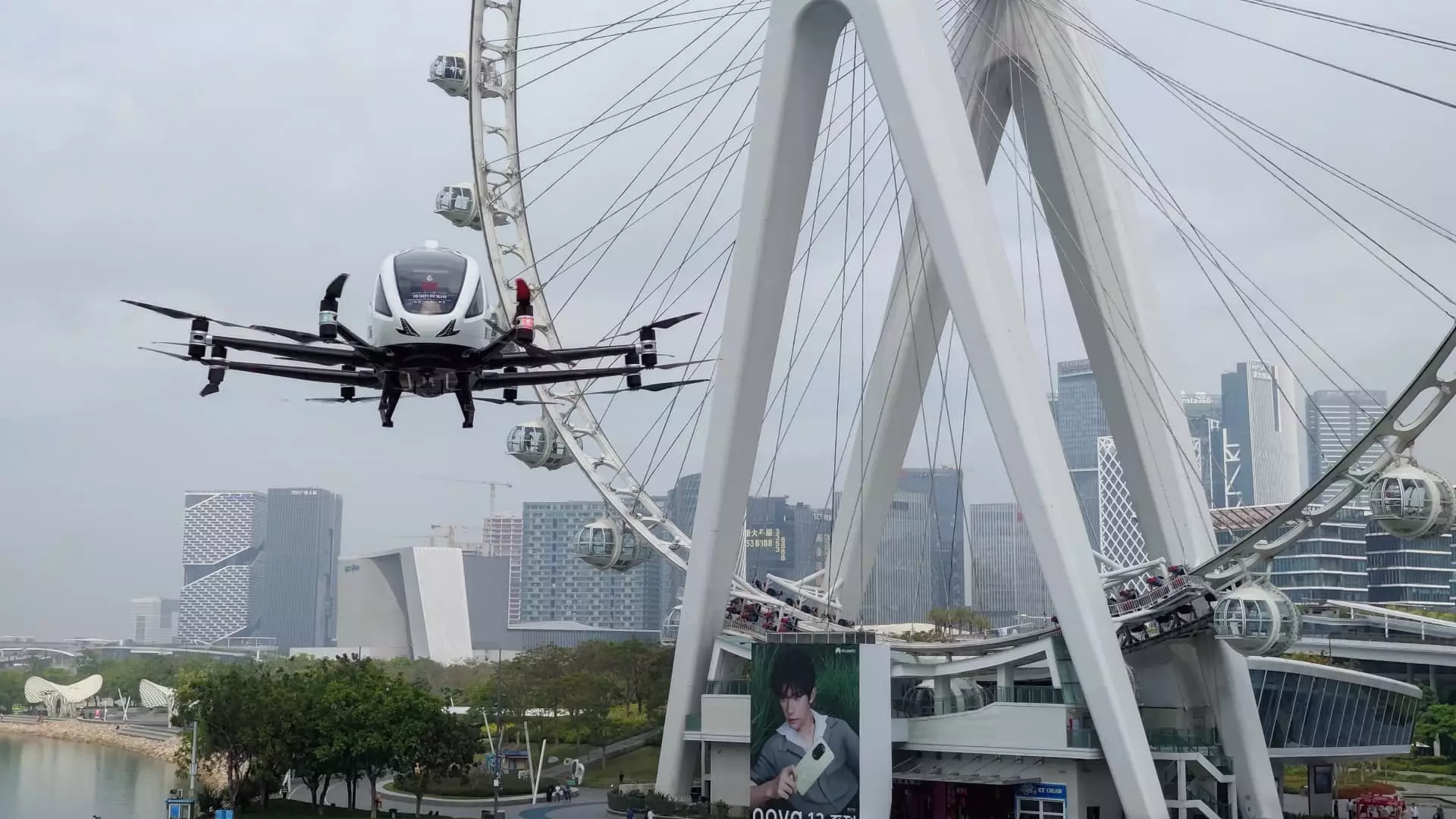In the bustling landscape of technological innovation, few advancements spark as much intrigue as the advent of electric vertical take-off and landing (eVTOL) aircraft. Among the sea of hopeful startups, one Chinese company, Ehang, has taken the lead by receiving certification to transport passengers—a feat that remarkably remains unmatched globally. With Ehang’s inaugural flights set to commence for tourists this June, the potential for shaping a new age of transportation is palpable. This vision, coupled with China’s strategic economic positioning, suggests a transformation that goes beyond mere aviation—it indicates a shift in economic dynamics.
The Stability of a Monopolized Market
Bank of America’s recent analysis underscores a critical insight: Ehang seems poised to maintain a 100% market share in China as the domestic aviation environment constructs formidable barriers for new competitors. The rigorous certification process mandated by the Civil Aviation Administration of China creates a challenging landscape for eVTOL entrants. This monopolization might strike a pessimistic tone for free-market advocates, but it reinforces the notion that stability breeds innovation. In an evolving industry, having a leading player offers the reliability essential for soaring consumer confidence.
Let’s not overlook the economic implications of such dominance. Ehang is projected to thrive with national policy support that encourages the development of a “low-altitude economy.” Such coordinated governmental efforts suggest that innovation will not merely survive, but flourish, in a structured environment.
Tourism: The Launchpad for Future Endeavors
Ehang’s initial foray into the tourism sector is not just a business endeavor; it’s a strategic positioning to capture consumer imaginations and redefine travel experiences. The company’s projection to deliver around 442 units this year and 813 next year embodies an ambitious pursuit that might be underestimated by Western counterparts. The designated routes promised to tourist hotspots are more than mere flights; they are luxury experiences that potentially position the company as the face of aerial transport.
What’s particularly compelling is the projected demand: expect every major tourist destination to seek multiple eVTOLs to meet rising expectations. The estimated 80,000 units in potential market demand indicates that Ehang isn’t merely chasing market share; it’s building an ecosystem that integrates aerial travel into mainstream tourism.
Contrasting Paradigms: China vs. the U.S. Regulations
While the United States grapples with regulatory hurdles to allow passenger flights in eVTOLs, China’s government has fast-tracked innovation through a proactive regulatory framework. The dichotomy here is stark: where America stumbles through bureaucratic complexities, China surges ahead with investment and support. U.S.-based companies like Joby Aviation, while still in the race, face setbacks highlighted by declining stocks—standing in sharp contrast to Ehang’s spirited surge.
The fundamental question arises: what might be lost in the dilly-dallying of regulatory approval as we move toward an eVTOL future? Ehang’s path suggests that innovation thrives in a conducive environment, one that emphasizes swift adaptability over stagnant indecision.
Revenue Growth and Future Investments
The potential upside for Ehang is staggering as analysts foresee revenue growth percentages reaching 103% and 82% in 2025 and 2026, respectively. Such optimism does not emerge from thin air; it is backed by robust projections for the tourism sector, eventually leading towards a burgeoning urban air taxi market. The projections offer a tantalizing glimpse into the future—one where aerial transport becomes as integral as the ubiquitous ride-hailing services of today.
However, while these numbers reflect a promising trajectory, over-reliance on tourism may also present vulnerabilities. Should market dynamics change—whether through economic downturns or shifts in consumer preferences—Ehang might need to pivot rapidly to maintain its edge.
The Double-Edged Sword of Safety and Innovation
As exhilarating as the prospect of eVTOL travel may be, concerns surrounding passenger safety cannot be overlooked. Bank of America analysts have rightly articulated the reputational risks associated with potential accidents or incidents. In a landscape defined by rapid innovation, trust becomes a currency as valuable as the technology itself.
A single mishap could indeed have catastrophic consequences, slowing adoption rates or damaging Ehang’s hard-won reputation. Trustworthiness in aviation has always been paramount, and as new technologies burst onto the scene, establishing a solid safety record becomes non-negotiable. The road ahead is exciting, but it is littered with pitfalls requiring deft navigation.
Ehang’s venture into eVTOL tourism embodies the aspirations of a nation eager to redefine travel while simultaneously anchoring its economic future in modern technology. As the world observes, the efficacy of this ambitious undertaking will directly shape perceptions of innovation, safety, and market dynamics across the globe.

